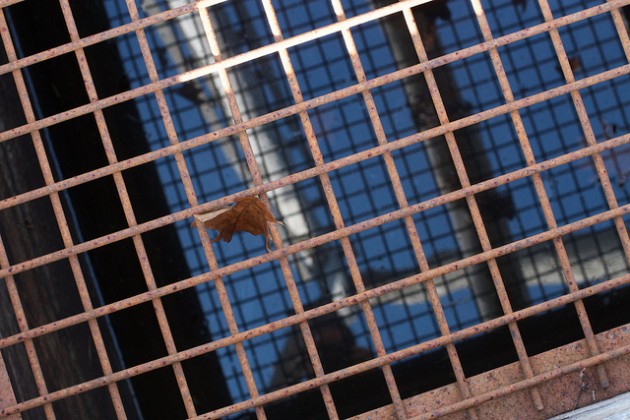-
It started with a tweet: Here is a new, awesome take on @reclaimhosting‘s logo–a GIF! @BryanMMathers you rule! pic.twitter.com/d4U2ZyYsac — Jim Groom (@jimgroom) April 22, 2016 Then Alan: Spinning Albums from Reclaim Records made this: Which was asking for a gif: This was a little quick and dirty, it used my original Dancing Jim from … Continue reading "Record Riffing"
-
New Research Project: Trans Tumblr
For about two years, I’ve been collecting data on the use of the #ftm hashtag and, for a shorter time, #mtf hashtag on Tumblr. These oft used trans hashtags, standing for female-to-male and male-to-female respectively, drew my attention as I was coming into my own trans identity. I came upon the world of trans Tumblr, as I call it, in 2010 when I was choosing my own new name. I found a tightly-knit network of trans people who are otherwise unanchored through their geographic diaspora. They were mostly very young, publicly sharing and connecting about the everyday violence and life milestones, accomplishments and losses that fuel life in general and trans life specifically. I was particularly struck by the small number of voices that dominated the conversation, as well as the suicide notes that would float to the surface and the resounding and instant response of those around them …
-
Is This Thing Still On?
A while back there used to be some blog posts, animated GIFs and the odd bit of audio here. This thing was even linked to the ds106 firehose. For a while, it was all fun and exciting. That was a long time ago. The vagaries of life and circumstances provided an easy excuse for the […] -
-
The End has Come Towards My Independent Learning Project…
It is unbelievable that semester has pretty much come to an end. And along with that, so has our Independent Learning Project. Towards the beginning of the semester, for one of our assignments, we were… More
-
My Presentation on Participatory Learning
My turn to present this week and I found this to be quite a challenge. There are so many different aspects to the way we participate online that it’s difficult to get your arms around them all. The authors themselves found themselves butting heads over how to define the problems they saw – the solutions, […]
-
Open Philosophy and Open Community
Tony Coughlan draws our attention to the forthcoming 10th anniversary of the Cape Town Open Education Declaration which asserted that “Open education is not limited to just open educational resources.” He points to Anderson’s (2003) theorem, “Deep and meaningful formal learning is … Continue reading →
-
12 Unique Reasons a Forensic Anthropologist Demands Respect
Forensic anthropology is a special sub-field of physical anthropology (the study of human remains) that involves applying skeletal analysis and techniques in archaeology to solving criminal cases. Forensic anthropologists are experts in their field. They are experts is osteology which is the study of bones. If you’ve ever watched the TV show, Bones, you have an […]
The post 12 Unique Reasons a Forensic Anthropologist Demands Respect appeared first on Science Alcove.
-
Tech Tools For Sharing Learning
Have you ever heard the saying, ‘a picture can tell a 1,000 words?’ In the assignment for this week ,we were given three graphic/visual tech tools to learn about:… More
-
Open Relationships: people and/or networks?
I previously referenced the intention to shift our attention to the connectivist relationships we enjoy in open scholarship. I very am excited by the keynotes at this year’s #OER16. Jim Groom has been on my radar for a long time and … Continue reading →
-
Divergent innovation and notions of openness
Kathrine Jensen and myself continue to reflect on David Wiley’s 5Rs of Open Educational Resources and how well suited they are to underpin thinking about the spirit of openness in higher education. The ‘spirit of openness’ is what I observe … Continue reading →
-
This week I joined in with #gridsgestures (worth clicking on…
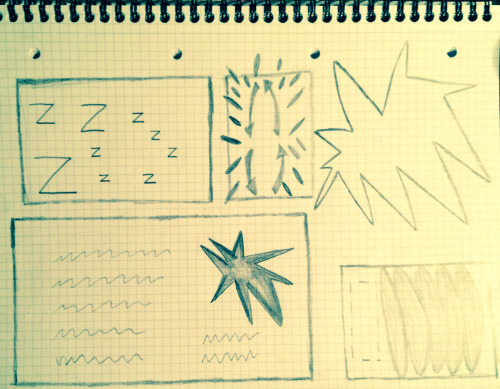
Day 1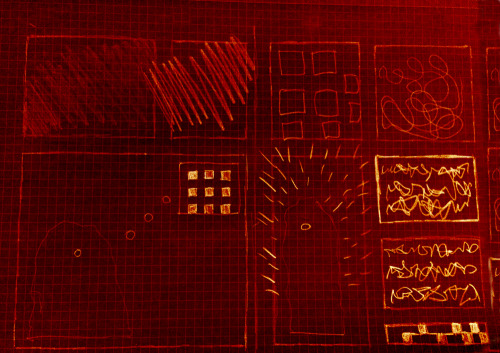
Day 2: Not as planned, never ending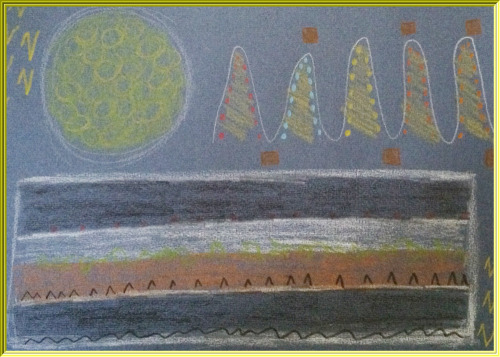
Day 3 - colour but flatlining on sofa with cold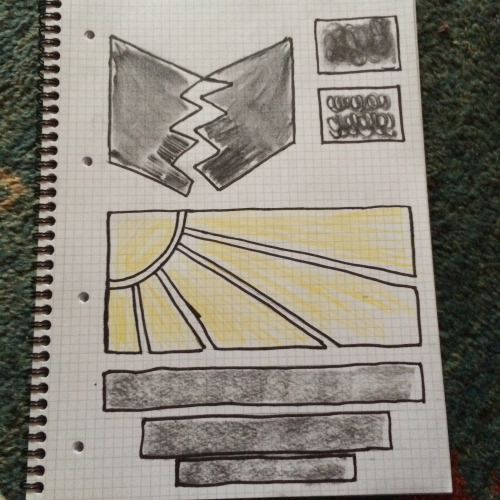
Day 4: a comic is the grid. Today no snafu :)
Day 5 Tears, snot and rain. Watery inside + out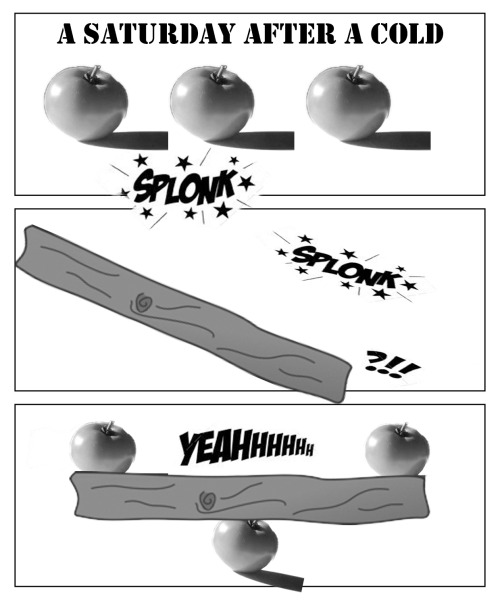
Day 6 - Working with digitalThis week I joined in with #gridsgestures (worth clicking on link to see all contributions) on Twitter. It was a comic making activity without drawing led by @Nsousanis who teaches comics as a way of thinking and uses this activity in his courses as a starting point to learn about time and space on the page.
This was timely for me as I am teaching myself to make comics following Comics: Art in relationship and Drawing Words, Writing Pictures. I have been struck by the idea the ‘time happens in the gutter’ in comics and also by the idea of challenging my imagination to ‘make the panels speak’. The task was to make a grid with marks on the paper that told of our day through the week. The photos above are my attempts, I tried different media to experiment with what might be my preference going forward.
My favourite and the one I got the best feedback was a simple pencil sketch. I think I have learnt how to start ‘to think comics’. Working with panels, text and words means great flexibility. One can let one’s mind create an idea, thumbnail this idea a few times as a kind of script, then production can be a quick sketch, digital, pastels or anything else one chooses. What is interesting to me is that the ‘work’ (for me at least) was in the thinking about the interplay of all elements in comics and how to express an idea on paper.
I think I now get abstract comics as a genre more. I also see what makes minimalist comics work. Look at the work of Shane Simmons, you do not need to learn to draw to produce them, but you do need scripting and an understanding of time in the gutter and how humans seek closure and make meaning, even out of dots! (click on his name to get more readable samples)
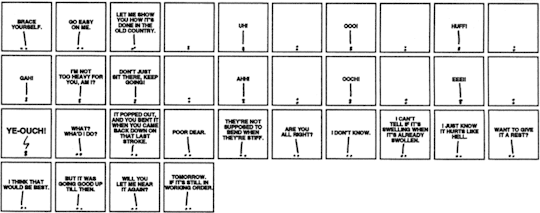
I am also starting to get the idea that what makes a comic funny is what is absent but implied as it makes the reader’s mind work to make sense. I have Matt Madden and Jessica Abel to thank for this as I practiced captioning a simple drawing that was not designed to be funny.
Also this week has shown me the importance of a title or some kind of context setting. I did this on the tweet for each day, but what was said mattered to make sense of the grid (look at the captions in each photograph and the last day has its title embedded - click on any image for gallery). Title or context is another element in relationship in a given comic. What Matt Silady suggests is the we avoid the kind of relationship between the elements where each element says the same thing. Redundancy in comics seems something less than desired. I guess it is because the reader has to do no work. It is all obvious and hence not funny. I see how some of my early digital attempts are just obvious and not funny.
This week was a great week to put together many ideas I have been learning on my courses. Thanks, Nick.
-
Continued Reverberations of Online Connections
flickr photo shared by priyaswtc under a Creative Commons ( BY-NC-ND ) license Three posts recently had me thinking again about the reverberations of online networks or communities or whatever term it is you wish to use to indicate projects that never quite end. First, there was this tweet from my Making Learning Connected MOOC […] -
-
Long overdue – let’s catch up
Let me see, so much has been happening since my last post, which was about M2M. I can assure you I’m as random as ever. Lets go month by month and pick out the highlights!I was very particular about not sharing too much personal stuff on my blog…guess I am becoming more of a private person and trying my best to protect the best things that are happening to me. I have also realised that I am not too found of attention and people talking about me.In the month of Nov after I left OnePlus India, I learnt a very big career lesson. Its not important for which brand you are working, assure that you have good & inspiring leaders. So to all those who wondered why did I leave the company within a year you got my answer.I also believe “Most companies fail because of leadership.. Never because of product”.Since Nov my life has been very adventurous. I was working on a project with Vodafone in Chennai. Loving the people, food, beaches & roads of Chennai. Everything was just close to perfect & that’s when Chennai floods came in. That night the rain never stopped. It was pitch dark and no power throughout the city. I was locked in my flat & luckily my area had no water lock. The morning was a terror. I was hearing the news of what was going on in Chennai and to the death stories. I cant describe the pain the city went through ….nor can I hold back my tears as I go back to those days. I had to leave the city the very next day, but I have this regret that I wasn’t around to do my best for the people & the city.So, from my learning - if you ever get a chance to do any community service for people please take up such opportunities.For new years I along with my sister & dear friends travelled to Belum Caves and Gandikota. After seeing the negative side of nature in Chennai I got to see the beauty of nature.Traveling is fun & more importantly for me it helps me re-defined my perceptions about things, places & people.It was my first visit to Kolkata –some how I connected to the place very easily.Well life was getting easy, less exciting & challenging. So the crazy part of me wanted to explore how life & career shapes up in Shenzhen. So here I am, blogging from my sweet home, road-facing apartment.So far it has been an exciting journey. Yes, life is not easy here:- I don’t have free open Internet to surf Google, FB, Twitter, Youtube & many more sites- For a vegetarian like me, we have very less options to eat outside.- Hardly people know to speak English & all the signboards are in Chinese text.- I use an app to communicate with people here.- Away from Family & Friends.I left back a very comfortable life back in India, but guess what I love it all.Do you wonder what makes me like China? Well my next blog post will have some very interesting stories from the life I am living here. Till than take care & love! -
Bazen bir ?ark? ç?kagelir, tüm her?eyi anlat?r ya, bu da…
Bazen bir şarkı çıkagelir, tüm herşeyi anlatır ya, bu da yıldızlara duyulan özlemi güzel anlatmış…
#NowPlaying Etoiles, pt. 1 by Avia
-
Academic Discourse Deviation: risks, opportunities and consequences of multi-modality.
This is an essay I wrote for my MA TESOL module on Issues in EAP. Unfortunately, it did not score well. It did not meet the requirement of the University (Nottingham) of links the theory to practice. I wonder … Continue reading → -
The movie is better?!
Ask any book lover and they will always say that the book is better than the movie. There are countless memes describing the plight of the reader, where he/she reads the book first and waits with bated breath to view its screen adaptation and how they get disappointed that the storyline veers from the original.… More The movie is better?!
-
Another Story – Life is Sweet – A new wardrobe
“Vanity rejects all healthy nourishment and lives exclusively on the poison of flattery.” as Marie von Ebner-Eschenbach once said. And so it was on a Saturday noon when Susan came to meet Sisley for lunch. Sisley was still at the Spa to get a little beauty facial and manicure to be ready for tonight’s surprise […]
-
?????? ???????? ?? ?????? ????????????? ??????
По просьбе обеспокоенных читателей перевел письмо Лайтмана по поводу «интегрального садика». За которым он «наблюдал с женой». С которой не живет уже лет 15. Если вы считаете письмо возмутительным, поделитесь им с друзьями. скоро лето и ББ будет проводить «интегральные садики». Если там пострадают дети, это на нашей с вами совести тоже. Оригинал письма на … Читать далее Письмо Лайтмана по поводу интегрального садика
Запись Письмо Лайтмана по поводу интегрального садика впервые появилась Shuniata Digital Marketing.
-
-
Good cop, Bad cop!
In one of my random ramblings, I thought to myself – Would I be the good cop or bad cop? I mean…if I could choose I’d definitely be the bad cop. If there’s something I’m good at, then it would be using a sharp tone and a brusque manner.Unfortunately, a serious countenance enhances that! This… More Good cop, Bad cop!
-
TEF and REF: what are the effects?
I have been invited to speak as part of roundtable discussion about the effects of the Teaching Excellence Framework and the Research Excellence Framework on teachers, researchers, students and higher education. This discussion is part of a research conference hosted … Continue reading →
-
If open is the answer…
Catherine Cronin asks “If open is the answer, what is the question?” #oer16 Catherine invites us to answer this question to inform her keynote at #OER16 and a webinar she is doing this week with Viv Rolfe and Lorna Campbell … Continue reading →
-
Finding the open in the in-between: changing culture and space in higher education
Myself and Kathrine Jensen are presenting at #OER16 (Tue, Apr 19 2016, 2:00pm – 3:30pm) in a couple of weeks time. There’s a lot to cover in the time we have allocated. I thought it would be useful to share some of … Continue reading →
-
Figuring out my kids’ digital lives
Chapter 2 As a parent, I had a strong reaction to many of the arguments put forward in the first chapter and spent the bulk of my time on that. The intro states that adults fail to recognize or appreciate the ways in which youth use tech to connect with others, learn and participate in […]
-
Grids and Gestures: A Comic Make
Nick Sousanis, whose work as a graphic story/artist is always intriguing (see Unflattening) and interesting, is hosting an informal week of Grids and Gestures, his activity that invites you to make a conceptual comic built around time and design. Nick did a Make with Me hangout with CLMOOC this past summer, and we all did […] -
My Recommendation Writing Policy, and Advice on How/When/Who to Ask
Semester after semester, I find myself receiving an increasing number of requests to write recommendation letters. They are a pleasure to write. Unfortunately, my students often appear confused about who to ask or feel nervous to ask so that they send their requests at the last possible minute, thereby leaving me with little time to write the best letter for them. Another dilemma is that undergraduates often have never asked for letters and fail to supply all of the needed information, or do not know how to tell me the story of what they need and how they need it. Yet another issue is that students do not know the labor involved or the depths to which professors and others go in writing such letters.
-
Podcasts and Digital stories
I have never heard of podcasts and digital stories before. Now that I have done some research on them, I do have to say as a future elementary teacher, they can be used in… More
-
‘To be associated in space,’ or: a delightful misreading
My dear friend and colleague, Maggie Galvan, put up a post some time ago with a pretty powerful quote from feminist, queer, critical race, and postcolonical theorist Gloria Anzaldúa:
According to Edward Hall, early in life we become oriented to space in a way that is tied to survival and sanity. When we become disoriented from that sense of space we fall in danger of becoming psychotic. I question this—to be disoriented in space is the ‘normal’ way of being for us mestizas living in the borderlands. It is the sane way of coping with the accelerated pace of this complex, interdependent, and multicultural planet. To be disoriented in space is to be en nepantla. To be disoriented in space is to experience bouts of dissociation of identity, identity breakdowns and buildups.I misread the final line as: “To be associated in space is to experience bouts of …


